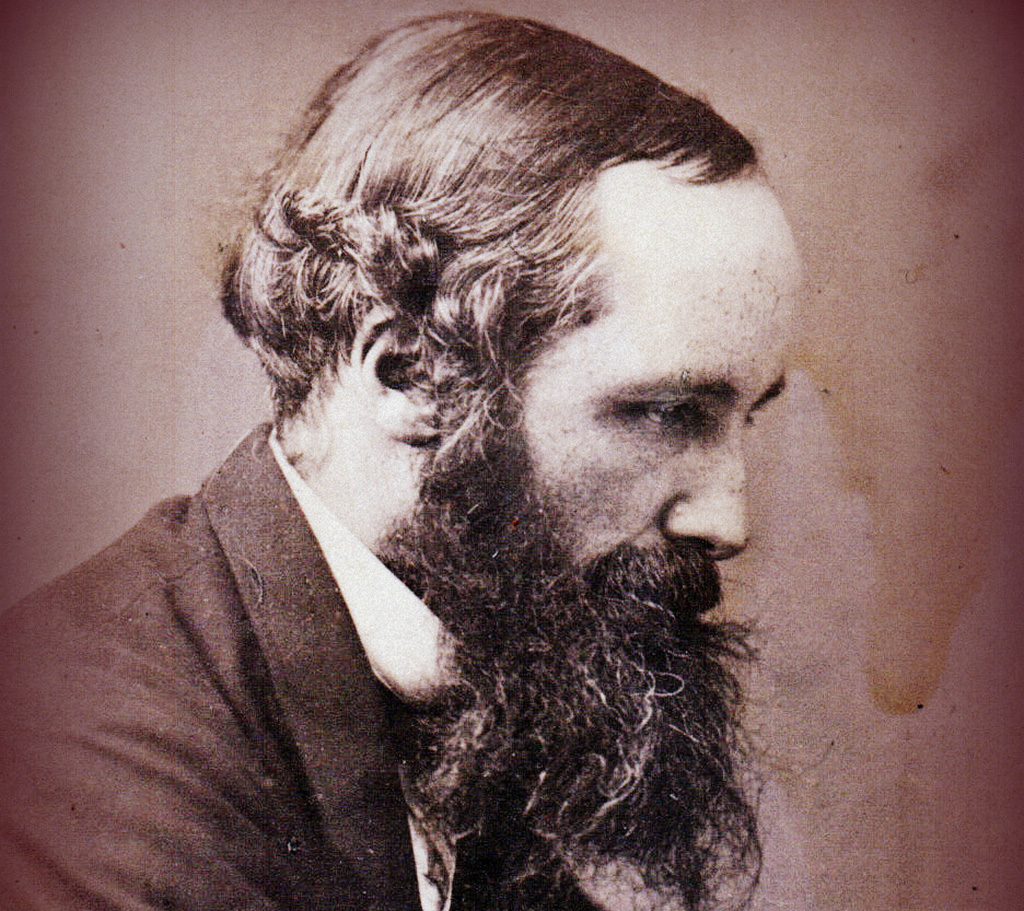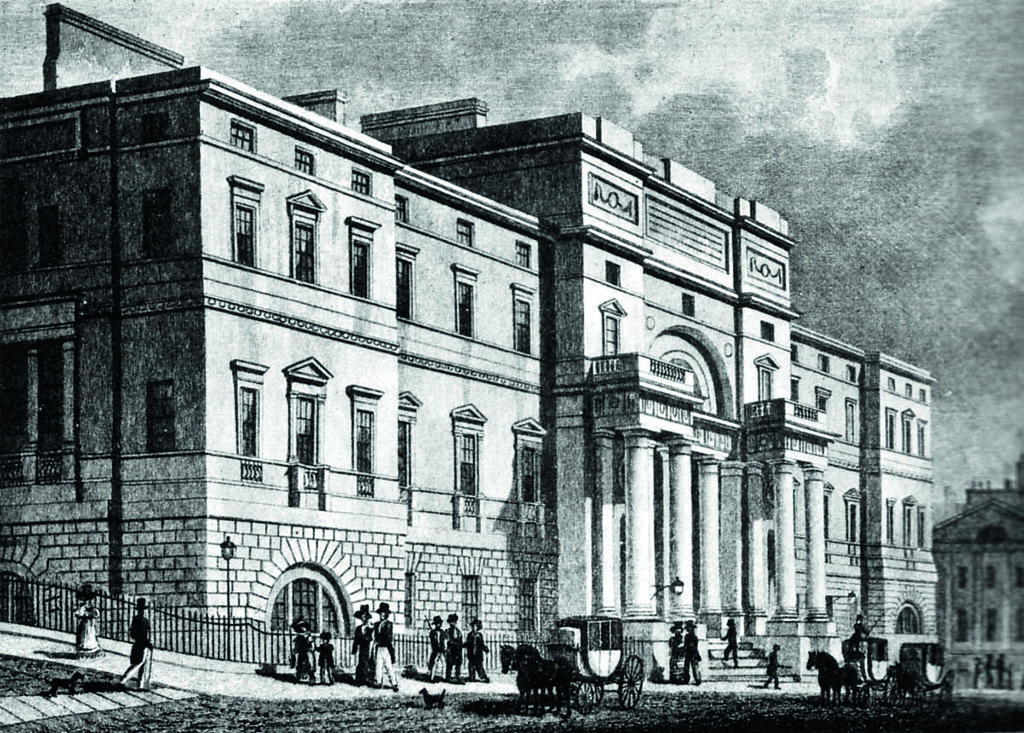
The Scotsman who was a hero to Albert Einstein
When Albert Einstein, perhaps the most famous physicist of all time, published his special theory of relativity in 1905, he used the opening sentence to mention one of Scotland’s greatest scientific minds – James Clerk Maxwell.
Later, when marking the centenary of Maxwell’s birth, Einstein wrote: ‘The theory of relativity owes its origins to Maxwell’s equations of the electro-magnetic field. This change in the conception of reality is the most profound and the most fruitful that physics has experienced since the time of Newton.’
High praise indeed, and Einstein wasn’t alone in singing about Maxwell’s achievements.
In a poll carried out among the Institute of Physics’ 50,000 members in 1999, Maxwell finished third, behind only Einstein himself and Sir Isaac Newton. The Scot ranked above Italian scholar Galileo Galilei and quantum physics legends Niels Bohr, Paul Dirac and Erwin Schrodinger.
He may have also taken the first permanent colour photograph, produced ground-breaking work on colour blindness, and laid the foundations for radar and many of today’s electronic gadgets, but Maxwell’s greatest achievement was to bring together the theories that described electricity and magnetism into a single set of equations. They changed the way physicists understood and described the world.

A portrait of James Clerk Maxwell
As Professor Richard Feynman, the American Nobel Prize-winning physicist, put it: ‘Seen from, say, 10,000 years from now, there can be little doubt that the most significant event of the 19th century was Maxwell’s discovery of the laws of electro-dynamics.’
Genius comes in two forms. First, there is the regulation genius, of which there are several per generation, who make major advances in their disciplines, leaving their field more orderly than before.
Then, perhaps only once each century, there comes a magician; a person whose vision perceives the field to be actually chaotic – and whose genius is to see a higher order within that chaos, elevating the field to a completely new level of understanding.
From an early age, Maxwell’s teachers knew he was a prodigy. He was born in Edinburgh in 1831 into an aristocratic family (his uncle was the 6th Baronet of Penicuik) and was taught privately at the family estate of Glenlair, a few miles north of Castle Douglas in Galloway.
He attended The Edinburgh Academy between 1841 and 1847, with the school’s magnificent new science centre now named after him.
Socially awkward, in later life he was a prolific writer of Scottish poetry and an Evangelical Presbyterian. As a boy he was known as ‘Dafty’ by his schoolmates because of his rustic Galloway accent, curious manner and home-made clothes (including his shoes), not to mention his assumed mental deficiency.
However, even in his early teens he was already ascending towards the stratosphere of scientific thought. At 14, his first scientific paper ‘Oval Curves’, on the properties of ellipses, was read to the Royal Society of Edinburgh (RSE). It was presented by physicist and glaciologist Professor James Forbes after the teenager was judged to be too young to deliver it himself.

James Clerk Maxwell studied at the University of Edinburgh
He went on to study at the universities of Edinburgh and Cambridge, before being appointed as professor of physics at Marischal College in Aberdeen at the age of just 25. Yet it was at Cambridge that Maxwell was to find his true scientific home.
Cambridge’s chancellor, William Cavendish, 7th Duke of Devonshire, donated money to the university to build the world-famous laboratory that bears his name – but on the condition that the colleges would fund a professorship in experimental physics.
In 1871, Maxwell became the first man to fill the chair and he set about designing the layout for the Cavendish Laboratory, which opened three years later.
Bringing together electricity and magnetism allowed Maxwell to describe the electro-magentic spectrum, which runs from radio waves through infra-red, visible and ultra-violet light to x-rays and cosmic rays. Scientists had known that electricity and magnetism were closely related but, building on the work of Michael Faraday, Maxwell was able to prove their connection.
Aged just 33, Maxwell presented his findings to the Royal Society in London in 1864 under the title ‘A Dynamic Theory of the Electro-Magnetic Field’.
Professor Reginald Jones, one of Winston Churchill’s wartime advisors, hailed Maxwell’s achievement: ‘This paper was the first pointer to the existence of radiation other than light and heat. It ranks as one of the greatest leaps ever achieved by human thought.’
Maxwell’s unification of electricity and magnetism also laid the foundations for a tool that helped to save Britain during its darkest hour. In 1933, another Scot, Robert Watson Watt, was told by a friend from the Post Office about a problem that was afflicting its new very high frequency (VHF) radio transmitter at Daventry in Northamptonshire.
The VHF beam flickered every time an aircraft flew through it, with the flickering varying depending on the plane’s altitude and proximity to the transmitter. It was very irritating. ‘Yes, yes,’ said Watson Watt, ‘but how very interesting…’.
By 1940, Maxwell’s theories had enabled the flickering of radio waves to be developed into radar, the system used by Britain’s armed forces to detect incoming Nazi aircraft.
Though he is best known for his electromagnetism equations, Maxwell’s range was enormous. In astronomy, he calculated that the rings of Saturn could be neither solid, nor liquid, and so instead must be made up of particles orbiting around the planet, which he called ‘brick-bats’. His prediction was confirmed by the Voyager spacecraft in the 1980s.
Maxwell is even remembered as one of the pioneers of colour photography. In 1861, he gave a Royal Institution lecture at King’s College in London and demonstrated the world’s first colour photograph. He combined three black and white photographs of a piece of tartan ribbon taken by Thomas Sutton – which had been exposed through red, green and blue filters – to create a colour image.

The James Clerk Maxwell Telescope opened in Hawaii in 1987
His other achievements were numerous. In thermo-dynamics, he came up with the kinetic theory of gases, which is still widely used when considering plasmas and rarified gases.
His work on viscosity is still used today in the food industry and in medicine when considering how substances flow. And in engineering, he was the first person to calculate stresses on framed-arch and suspension bridges.
Maxwell died of bowel cancer in 1879 at the age of just 48. Yet the way he described reality in terms of a continuous spectrum of waves changed the way we perceive the world around us and prepared the way for our electronic age.
His memory lives on in Hawaii, where the UK Science & Technology Facilities Council and the National Research Council of Canada opened the James Clerk Maxwell Telescope in 1987. The telescope is the largest in the world to be looking at sub-millimetre waves, which lie between infra-red light and radio waves on the electromagnetic spectrum. It’s used to look at some of the coldest objects in the universe, including dust and gas lying between the stars.
So the next time you pass along Edinburgh’s George Street on your way to St Andrew Square, pause for a moment and look up at Alexander Stoddart’s statue of Maxwell, which was erected by the RSE in 2006 to mark the 175th anniversary of the birth of one of Scotland’s greatest scientific heroes.
- This feature was originally published in 2014.
TAGS

